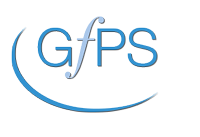In modern cleanrooms, laboratories and production facilities where sensitive samples are processed or sensitive products are manufactured or analyzed, cleanroom qualification plays a crucial role.
Our optional services for cleanroom qualification
Safety cabinets and fume cupboards
Working in safety cabinets is divided into three safety classes.
- Class 1 protects the user and the environment:
- Class 2 protects the user, the environment and the product
- Class 3 protects the user, the environment and the product with a physical barrier
Class 1 safety cabinets and fume cupboards are essential for the safe handling of hazardous substances and the prevention of contamination. These ensure the protection of operating personnel and the environment from hazardous substances and minimize the risk of cross-contamination.
Working in class 2 safety cabinets also serves to protect the product. Class 2 achieves a higher cleanroom classification in the workbench than the classification of the workbench environment. With Class 3 safety cabinets, the user is completely separated from the product by a physical barrier and works exclusively through gloves attached to the workbench, for example.
Regular maintenance and inspections in accordance with applicable guidelines ensure that the safety cabinet and fume cupboards function optimally and provide the necessary protection.
Flow visualization
The air flow plays an important role in the cleanroom for the alignment of the process sequences. When commissioning a clean room, the air flow is visualized and recorded, e.g. by fog.
The supply air and exhaust air are controlled by means of flow visualization. An efficient air flow helps to ensure that impurities are removed quickly and a constant cleanroom condition can be maintained.
Microbiological water analysis
Microbiological water testing is an important part of cleanroom qualification, especially for process water with product contact. It is used to determine the microbiological quality and to check for potentially harmful microorganisms. Regular water tests allow contamination to be detected at an early stage and measures to be initiated.
Hygiene training on site
In accordance with GMP guidelines, regular hygiene training is essential for all employees. The aim is to raise awareness of the importance of hygiene and cleanliness in the laboratory. Employees must be informed about the correct procedures for handling products, samples and cleaning agents in order to avoid contamination and ensure the quality of the results.
Regular training and tests, such as microbiological workplace testing, help to maintain a constant level of hygiene in the laboratory.
Guidelines
- DIN EN ISO 14644
- DIN EN 17141
- GMP Annex 1
- DIN EN 12469
- DIN EN ISO 19458
We will be happy to assist you with your questions at
aussendienst@gfps.de
